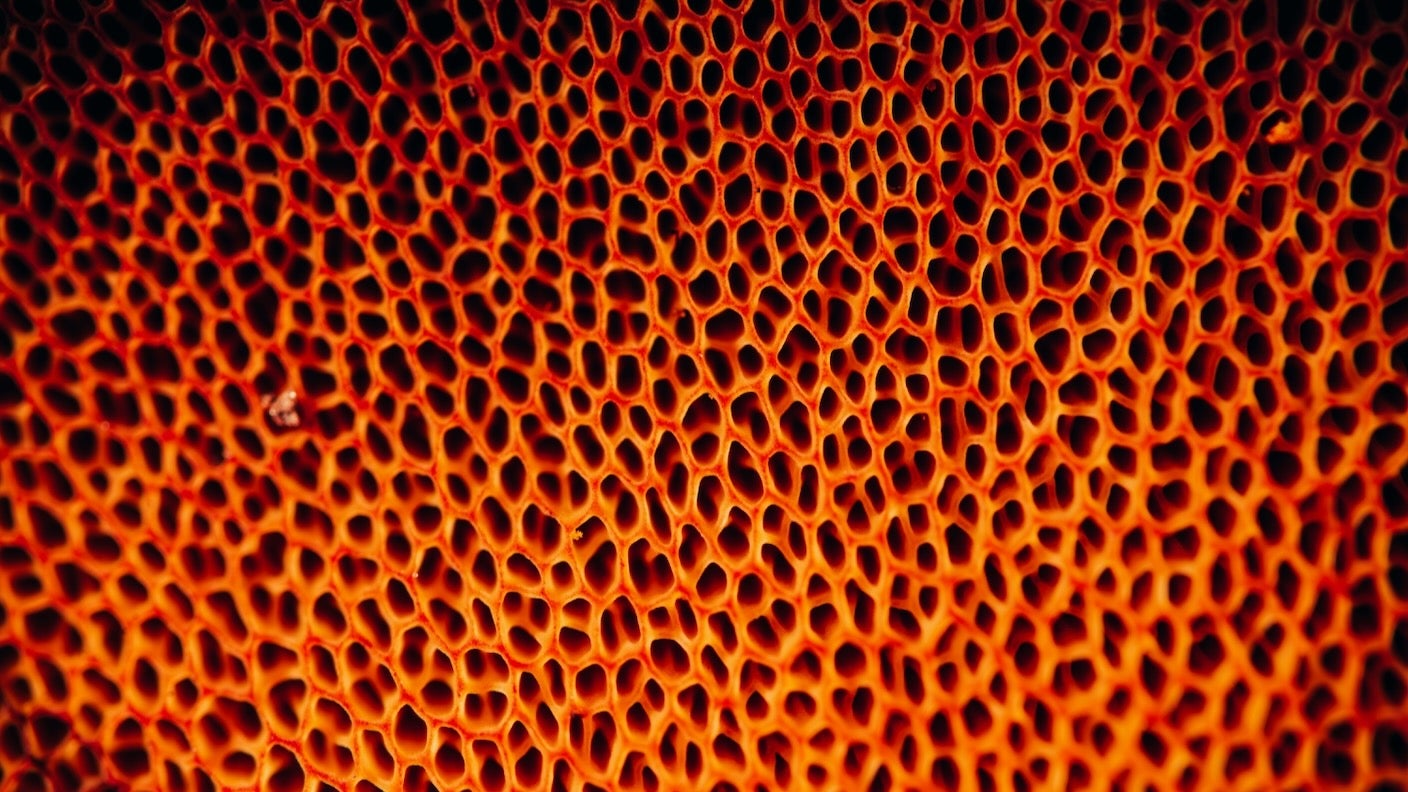
Scientists combined fungus and bacteria into a “living material” that stays alive for up to a month.
Fungi are master engineers capable of building vast networks underground. Now, researchers have harnessed their capabilities to create a living building material that could be a sustainable alternative to cement and one day even repair itself.
Nature has developed some impressive building materials that can often go toe-to-toe with the best human-made ones. Wood, coral, and bone have excellent strength-to-weight ratios, and they form at room temperature from readily available supplies.
It’s no wonder engineers have long dreamed of harnessing these powers in human-made structures. Now, scientists have combined fungus and bacteria to create a living material that stays alive for up to a month and can form bone-like structures. The researchers say this approach could one day be used to create structural components that repair themselves.

“We are excited about our results and look forward to engineering more complex and larger structures,” Chelsea Heveran at Montana State University, who led the study, told New Scientist. “When viability is sufficiently high, we could start really imparting lasting biological characteristics to the material that we care about, such as self-healing, sensing, or environmental remediation.”
The new material relies on a process called biomineralization. In this process, cells turn calcium in their environment into calcium carbonate deposits that harden underlying tissues or structures, as in the formation of bone or coral. But certain microbes can also produce calcium carbonate. Engineers have used the process to create “biocement” to seal cracks in oil-and-gas wells or produce masonry.
However, the microbes typically only live for a few days, leaving the final materials inert. Increasingly, scientists are working to create “engineered living materials” where the cells remain viable. These materials could repair themselves, photosynthesize, or sense their environment.
The Montana State researchers created their new material by combining the structural engineering capabilities of fungus (Neurospora crassa) with the biomineralization capabilities of bacteria (Sporosarcina pasteurii). They described the work in a recent paper in Cell Reports Physical Science.
First, they coaxed the fungus’s mycelium—the network of root-like filaments that make up the bulk of most fungi—to grow into a mesh-like scaffold. They then added the bacteria to these scaffolds and placed them in a calcium-rich growth formula, which the microbes converted into calcium carbonate in just 24 hours.
They found the material’s microbes remained viable for up to four weeks after removal from the formula, when kept at 86 degrees Fahrenheit. The researchers didn’t test whether the material could repair itself, but they say keeping cells alive longer is a crucial first step toward this goal.
The team also created beam-like scaffolds that mimic the structure of cortical bone—the strongest type of bone that provides its structural integrity—and then effectively mineralized them. Controlling the internal shape of the scaffolds like this could significantly broaden the types of structures and uses these materials might target.
One limitation is that the researchers couldn’t culture the two species together. They had to kill the fungus after it had grown the scaffold before adding the bacteria. This means the material is only partially living, which could limit what it can do down the line.
But the work opens new possibilities for the growth of high-performance building materials that are both more sustainable and include smart features like self-repair or power generation.
The post This Living Building Material Forms Bone-Like Structures and Could One Day Repair Itself appeared first on SingularityHub.
* This article was originally published at Singularity Hub

0 Comments